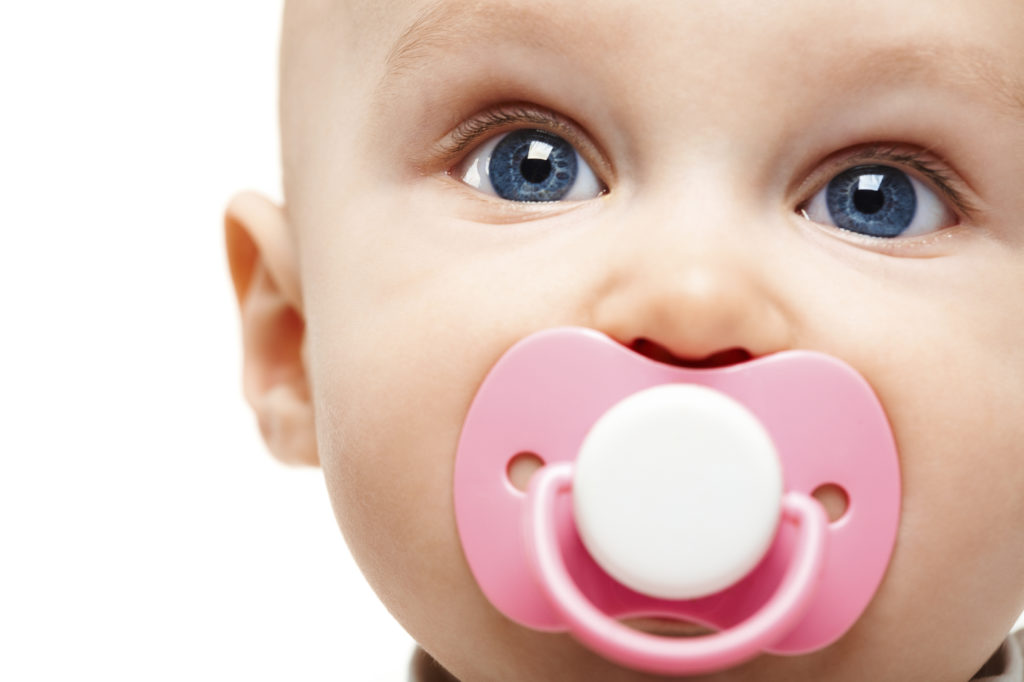
By Lisa Pecos
Binky, dummy, choo-choo—regardless of what you call a pacifier, parents have long debated whether or not they’re a godsend or a mistake when it comes to a baby’s health.
Babies naturally have a strong sucking reflex, which is why many even begin sucking their thumbs and fingers in the womb. Besides sucking being the way they get their nutrition when feeding, babies also find sucking calming and soothing. But are there any other benefits to pacifiers?
The Benefits of Using a Pacifier
The following are some of the benefits of pacifiers:
- They may help soothe a fussy or irritable baby
- They may be able to help your baby fall asleep
- They make a great temporary distraction, especially when your baby is upset after getting their shots or blood work
- They can help ease the ear discomfort of pressure changes when flying
- They might reduce the risk of sudden infant death syndrome (SIDS), according to a 2012 study
The Disadvantages of Using a Pacifier
There is a downside to pacifier use. This includes:
- A baby can become dependent on the pacifier, which can cause them to cry when it falls out
- Prolonged use can lead to dental problems, such as misaligned teeth
- Early use of a pacifier may interfere with breastfeeding
How to Use Pacifiers Safely
If you prefer to give your baby a pacifier, consider the following tips on using them safely:
- Wait until your baby is 3 to 4 weeks old and settled into a good breastfeeding routine
- Opt for one-piece silicone pacifiers instead of two-piece pacifiers that can break and cause choking
- Give your baby the pacifier between feedings and not when the baby is hungry
- Don’t force the pacifier on your baby if he/she isn’t interested
- Avoid using a pacifier as your first method for calming a crying baby
- Always keep the pacifier clean and choose a dishwasher-safe pacifier
- Replace pacifiers as the baby grows, choosing the size accordingly
- Don’t put sugar, honey, or any other sweet substance on a pacifier
- Wean your baby off the pacifier by using swaddling, massage, and methods of soothing
In most cases, children stop using pacifiers on their own, usually between the ages of 2 to 4 years. For those that need a little more coaxing, you can use activities or other objects to help distract them from their craving for their pacifier. Try playing games or giving them a plush toy or blanket. If your child is old enough to understand, then include them in the decision to stop using the pacifier by letting them trade the pacifier for a toy of their choosing or making the discarding of the pacifier special, such as by placing it in a keepsake box or even burying it. Your doctor may also be able to help if you have trouble weaning your child off the pacifier when it’s time.